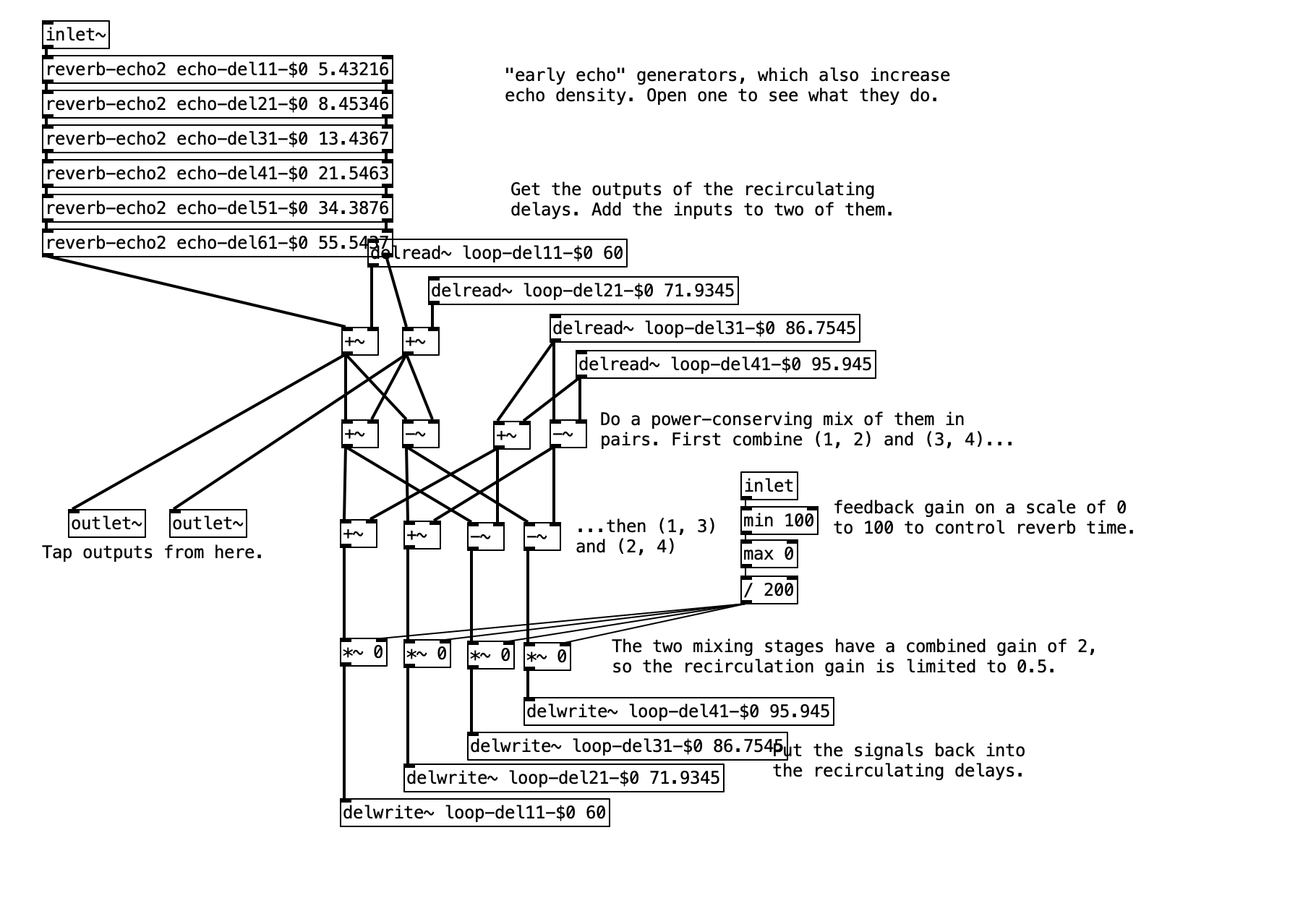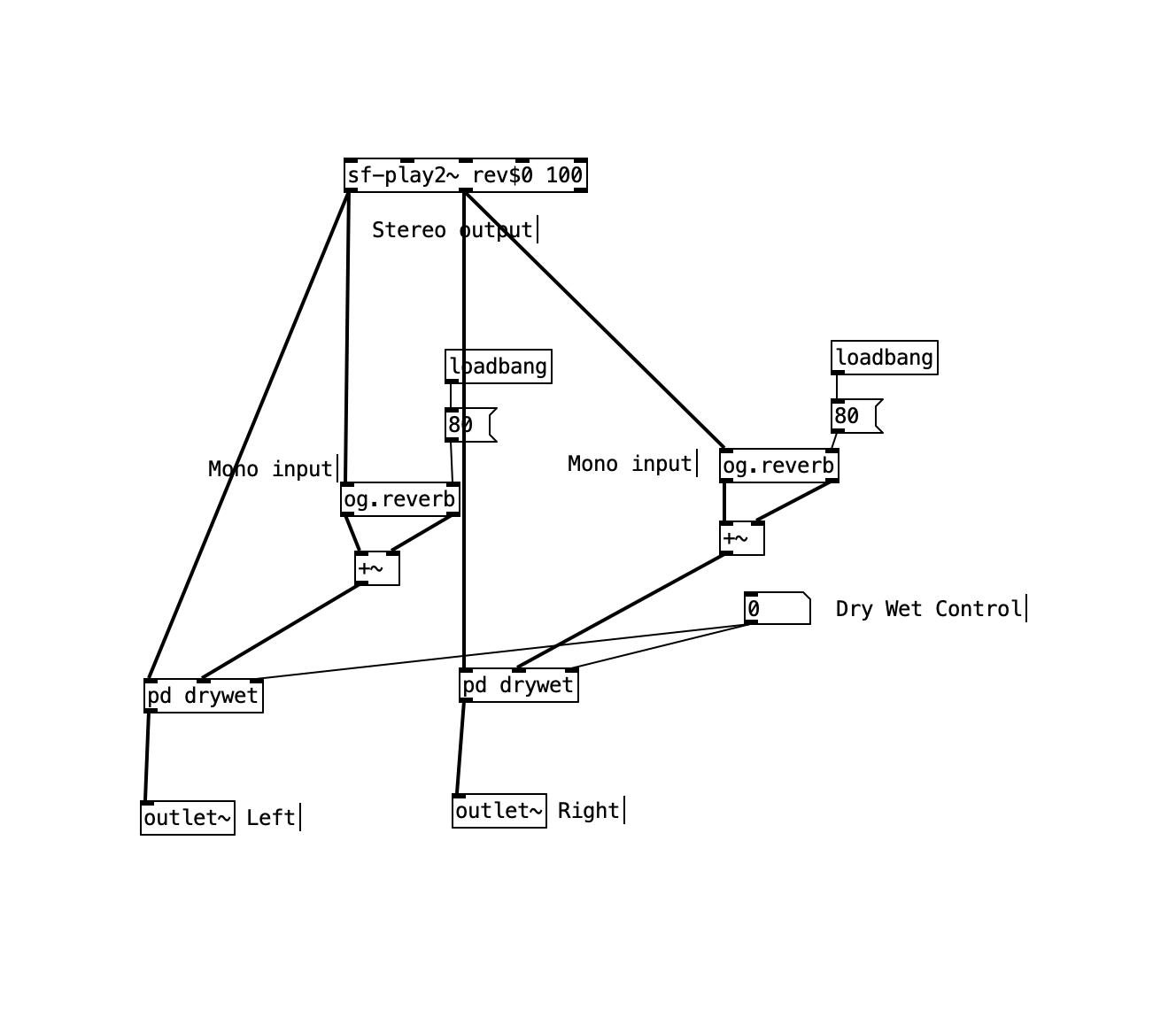Notice that the delay times are different, feeding into the two outputs. So the two outputs will be different. That means, if you feed one of the channels to the left speaker and the other to the right, you will get some sort of stereo imaging.
BUT your second screenshot shows you flattening the two reverbs' stereo images down to mono.
- sf-play2 L output --> reverb (L and R) --> sum reverb L and R to mono --> left channel
- sf-play2 R output --> reverb (L and R) --> sum reverb L and R to mono --> right channel
I think this will produce a weird stereo image. I wouldn't do it this way. You might try mixing the two reverbs' left outputs together, and the two right outputs together.
But, if you want a more realistic stereo reverb for a stereo input, then I would not use a mono-input reverb. I usually recommend [rev3~] in my course (which is 2-in, 4-out but I just drop the 3rd and 4th outputs).
The reason why is that a mono-input reverb doesn't know where in the stereo field the source is. So you get an illusion of more space, but the stereo imaging will be less precise than a stereo-in reverb.
hjh


